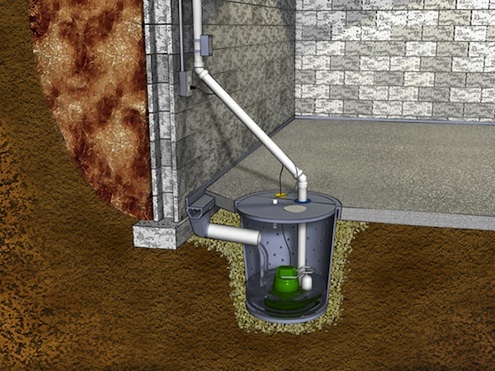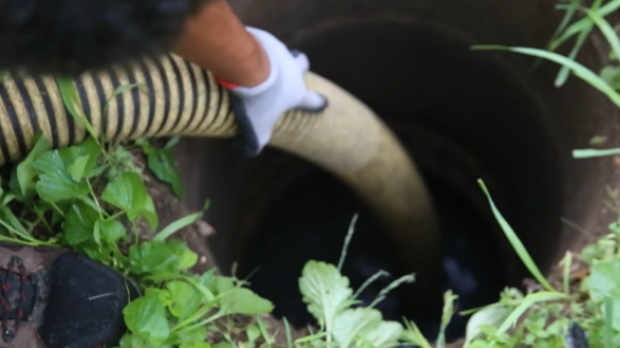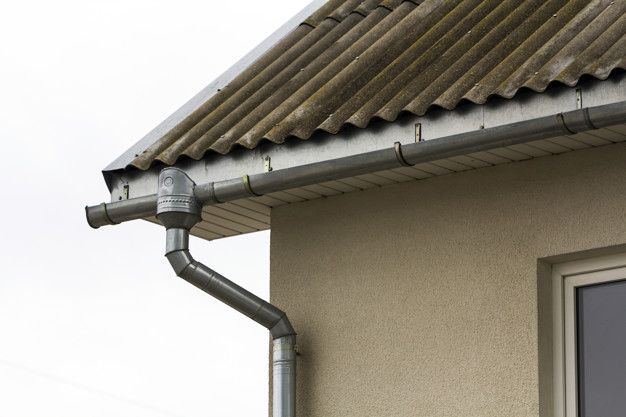If you have water in your basement, it can be a huge source of stress and worry!
 Photos By: Stock Images
Photos By: Stock Images
Water in the basement can cause structural damage, create an unhealthy living environment, and make it difficult to use the space for storage or other activities. Fortunately, there are a few different methods that you can use to get rid of water in your house basement.
From using a sump pump to installing French drains or interior waterproofing systems, these solutions will help ensure that your home stays dry and safe from any potential flooding risks. Read on to learn more about how to get rid of water in your house basement quickly and effectively.
1. Use a Sump Pump:
A sump pump is an effective way to remove water from your basement. It’s a device that collects excess water and pumps it out of the area. The pump should be installed in the lowest part of the basement so that it can get rid of all the collected water quickly and easily. In addition, you should also check the power source and ensure that it’s working properly before using the sump pump. Also, be sure to check the pump regularly and clean it of any debris that may have gathered. For instance, leaves, sticks, and other materials can clog up the pump over time.

2. Install French Drains
French drains are a great way to get rid of water in your basement as well. They’re installed around the perimeter of the room and work by diverting any water that seeps through cracks or gaps in the walls away from the house into a drainage system outside. This is an especially effective solution for homes with a high water table or those prone to flooding.
However, French drains need a large amount of gravel and can be difficult to install depending on the layout of your basement. This is why you should always consult with a professional before attempting to install this waterproofing system. Also, be sure to check the drainage system regularly for any blockages or damage.
3. Install an Interior Waterproofing System
Installing an interior waterproofing system is another great way to get rid of water in your basement. This solution involves applying a membrane and sealant on the walls and floor of the basement. The membrane helps keep out any moisture and water that may be present in the area while the sealant keeps it from seeping through small crevices or cracks in the walls or foundation. This is a more permanent solution than French drains but can be expensive depending on the size of your basement.
However, it will help ensure that your home remains dry for years to come! Also, water can cause massive damage to your property so once you waterproof the foundation of your home you ensure the safety of your property. That’s why it is better to install an interior waterproofing system for long-term protection.

4. Use Dehumidifiers
Another way to get rid of water in your basement is by using a dehumidifier. These devices are designed to help reduce the amount of humidity in the air, which can prevent moisture from seeping through the walls of your home and into your basement. They also work well for preventing mold growth which can be damaging both to your health and property. Be sure to check the settings on the dehumidifier regularly and clean out any collected water that’s been absorbed by it. This will help ensure that it continues running efficiently and effectively. For instance, leaves, sticks, and other materials can clog up the pump over time.
5. Regular Maintenance
No matter what method you choose to get rid of water in your basement, regular maintenance is a must. Make sure to check the drainage system regularly for any blockages or damage, and clean out dehumidifiers every now and then. Also, keep an eye on the sealant around windows and doors as well as any cracks in your foundation and walls. These simple steps can go a long way toward keeping your basement dry. So make sure to invest some time into regular maintenance on a regular basis!
Additionally, always be sure to check and maintain your sump pump to ensure that it’s working properly before using the sump pump. By doing this, you can ensure that your home remains dry for years to come!
 Corner of a house with a steel gutter system
Corner of a house with a steel gutter system
6. Install Gutter Systems
Installing gutter systems around the perimeter of your house is another great way to get rid of excess water in your basement. Gutters help collect rainwater from the roof and move it away from the foundation of your home into a drainage system outside. This helps keep water out of the basement by preventing it from seeping through any cracks in the walls or foundation and collecting around the edges of your house.
However, gutters need regular maintenance such as cleaning out debris, making sure they are firmly attached to the roof, and checking that all downspouts are clog-free. Additionally, make sure to check your gutter system in the fall before winter comes so you can be sure it is functioning properly. This can help prevent any costly water damage from occurring.
7. Check Your Window Wells
Window wells are a great way to let natural light into your basement and prevent flooding at the same time. However, if these window wells become filled with dirt or debris this can cause them to overflow when it rains or snows which can lead to moisture entering your home through small cracks and crevices in the foundation of your house. To avoid this from happening, regularly clean out your window wells and remove any dirt or debris that has built up over time. Additionally, make sure to check the sealant around your window wells for any signs of damage as this can also lead to water entering your home.
Water in the basement can be a major issue and cause expensive damage. Fortunately, there are several solutions to help keep your home dry, from installing an interior waterproofing system to using dehumidifiers or gutters for long-term protection. Regular maintenance is also key when it comes to keeping water out of your basement – make sure you check all drainage systems, window wells, and sealant around windows and doors as well as any cracks in walls or foundations regularly. With these tips and tricks, you should have no problem keeping your home safe from water damage so that it remains dry for years to come!




